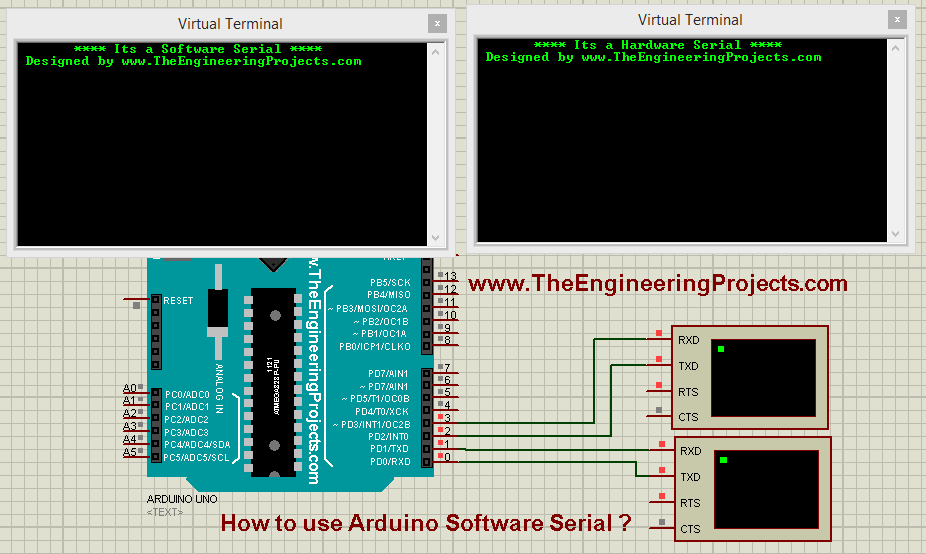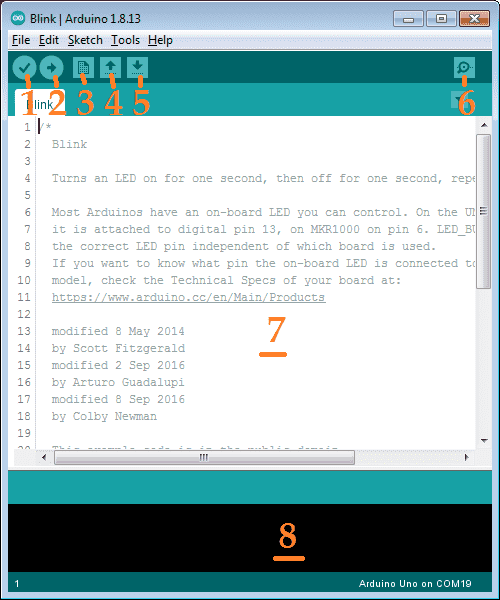

First, the menu programming loop needs to be.In this case the instruction is:Įxample: Change the CTCSS encode/decode tone Should be stored in the program so they canīe looked up when the user requests the correspondingĬommand. Determine the opcode for the desired instruction.Think how this would be entered using the keypad Input pin of the DATA jack on the transceiver.Įxample: Tune to 145.520 MHz this assumes directįrequency entry (menu function 33) is enabled.
Arduino software serial serial#
The parameters, then send them to the SI serial The PCC control program mustĬonstruct the appropriate instruction opcode, organizing There are 60 instruction opcodes listed in the table You can use a specially-written program or the computer Hold (F0h) for buttons that have dual functions, depending (22h-25h) can also be entered, as well as press & ON command (AAh) afterwards, following PCCĬommands take effect. Operation must first be enabled by sending the PCC ForĮxample, to activate the Spectra-Analyzer, a hexĬode of 19h must be sent. Next, note its corresponding hexadecimal code. The coding table on the next page lists allįunctions with the corresponding hexadecimal code.įirst choose which function you wish to emulate. All transceiver settings can beĬonfigured by sending commands in hexadecimalĬode to the transceiver CPU via the FIF-232C interface. Eachīyte consists of one start bit, 8 data bits, no parityĪnd two stop bits. Serial TTL data (0/+5V) at 9600 bps is sent via theĭATA IN & DATA GND pins of the DATA jack. If I can get this up and running, I would like to try to implement variable resistors for the volume and squelch functions automatically sensing the change in voltage to send the appropriate codes for the function needed.
Arduino software serial code#
The code table can be provided later if necessary. Here are the instructions I have for this operation. I have not yet tried to send serial data out to a peripheral other than Serial.print Code samples in the reference are released into the public domain.I am considering using an arduino nano to act as a radio control device sending serial data to a radio when various buttons are pressed. The text of the Arduino reference is licensed under aĬreative Commons Attribution-ShareAlike 3.0 License.




 0 kommentar(er)
0 kommentar(er)
